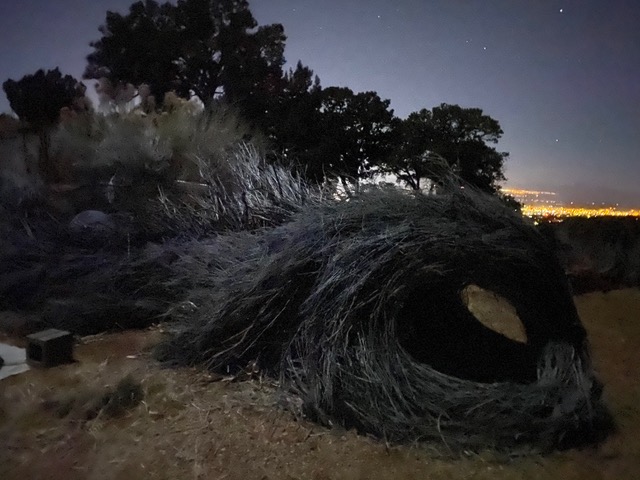Shrubconscious Basket Hut
The basket hut came as a result of my lifelong passion for shelter, beginning with studying adobe building construction after high school. The art of shelter developing more deeply when I was employed full-time in the construction trade for ten years, and also by my experiences with living close to the land for most of my life, in tents, tipis, cabins and shacks.
The inspiration for this shelter grew out of my desire to explore indigenous plants as a source of raw materials. At the same time, I’ve grown increasingly concerned with the needs of the growing homeless population. The third world is rife with examples that exhibit incredible ingenuity. As homelessness becomes more widespread, it is conceivable that making shelter from indigenous plants will become more commonplace even in the developed world.
This hut utilizes what are known around here as latillas – roof and fence poles fashioned from pinion trunks. We drove them into the ground about 16 to 20 inches in an ovular shape then began weaving apache plume branches in and out. Meanwhile the floor was smoothed out and layered densely with aromatic plants to make it soft, inviting, and insect free.
The process of working out the roof took awhile to decide on. I had originally envisioned a type of whirligig design. I made numerous models and in the end, we sourced renewable bamboo canes from a local nursery and lashed them to the upright pinion latillas and settled for a simple sloping shed roof. Then the thatch for the ceiling and roof was furnished by weaving green chamisa branches, in-between the bamboo gridwork. A woven willow trellis serves to surround the structure and line the walls, with salvaged privet stalks braced vertically as ribbing inside and out, for added character. The little broom at the front door makes me think some wee little witch lives in there.
